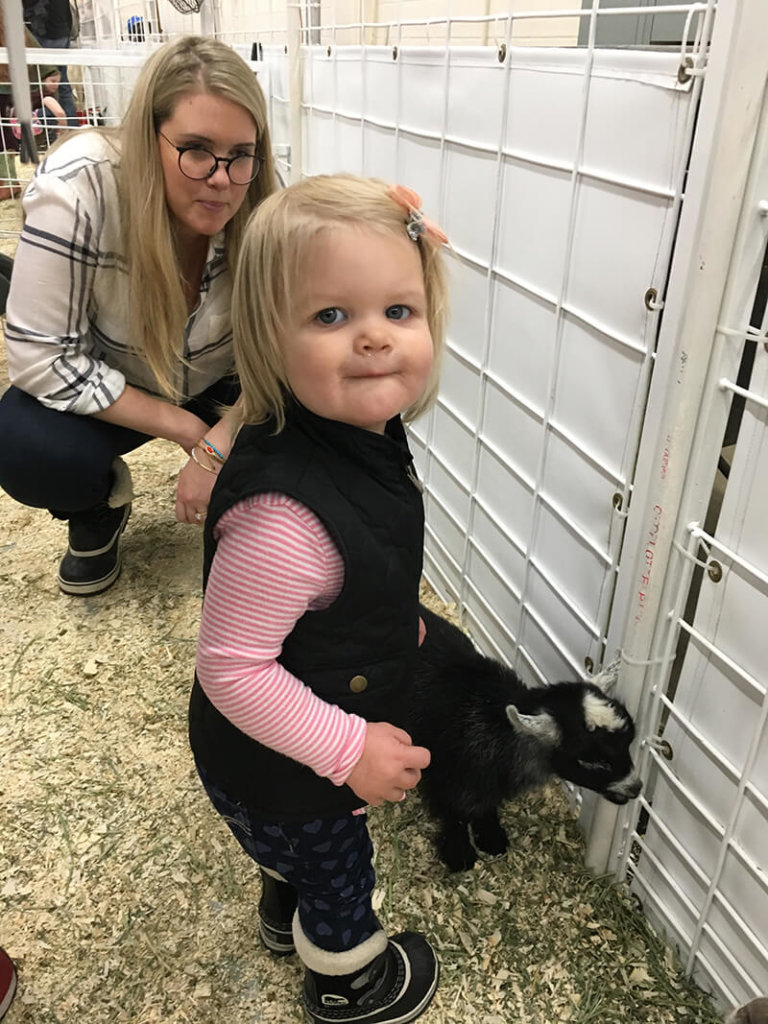BIG at the stock show

Everything is big in the West: mountains, vistas, cowboy hats, belt buckles. Everything, of course, except for water, which is scarce. But I digress.
At the National Western Stock Show in Denver, which runs for 16 days each January as it has since 1906, big is on display. In exhibitions and competitions and for sale are irrigation systems, hay balers, cowboy boots and hats, belt buckles, “concealed carry” purses, Dodge Ram pickups and cow washing stations (keeps the flies at bay and improves hide quality). Enormous cattle and horse barns, organized by breed, echo with moos and whinnies from Red and Black Angus cattle, Texas and Highland longhorns and, of course, horses. So rare that it sells at a special auction, 10 vials of “Sexed Female Semen” from the Red Angus sire Power Take Off are to be auctioned at a nearby hotel!
Nearly 20 breeds of cattle, ultimately used for seed stock, are on exhibit, along with sheep and goats for breeding. Recreational or companion animals include llamas, alpacas, poultry and dogs. In a hay-filled pen, beneath a huge Smithfield Hams banner, a sow nurses a dozen piglets.
“What will happen to the little pigs?” a boy asks. “They will become show pigs, like their mother, and travel to fairs and shows across the country.”
Coming to the Tunbridge World’s Fair soon?
Meanwhile, not far away, barbeque smells so good it’s hard to resist pork ribs or a ginormous turkey drumstick.
Kids work alongside their parents, raking up bedding and droppings and wielding huge blow driers to groom 2,000-pound cattle. Young exhibitors compete for prizes, national recognition and a chance at college scholarships. Stock Show events range from bison judging to stock dog trials and from the Aberdeen Market Steer Show to yak seminars. You might Catch-A-Calf or take the grandkids to the children’s petting zoo to cuddle pygmy goats. How about a mule and donkey show or a draft horse exhibition? Also on the calendar, Martin Luther King African-American Heritage Rodeo, Military Appreciation Night, sheep shearing and the Texas Longhorn Show.
A farmer from north of Denver sells bison that he raises. You can purchase one-eighth of the animal to take home to the freezer, presumably in the bed of your pick-up. While most exhibitors and farmers are from the West, Vermonters from Trafalgar Square in North Pomfret journey to the Stock Show, as they have for 36 years, to exhibit and sell their Scottish Highland cattle.
Professional rodeo includes bull riding, calf roping, barrel jumping and mutton busting, among the adrenaline-filled contests between two- and four-legged athletes.
Simultaneous with the Stock Show and across the Continental Divide in Steamboat Springs, Mt. Werner hosts the Cowboy Downhill. Created 45 years ago by Vermont native Billy Kidd, then Steamboat’s director of skiing, and an All-Around World Champion Cowboy, this exuberant ski and boarding event lures about 100 rodeo professionals to the mountains for a day of spills, thrills and laughter. Attired in the requisite chaps and cowboy hats and clicked onto skis and boards, the cowboys and cowgirls thread through several gates, fly off of a jump—many crashing upon landing—and speed to the bottom of the hill where they lasso a ski hostess and saddle a horse before crossing the finish line. This year competitors included Miss Rodeo North Dakota and Miss Rodeo Montana. Note: Miss Montana can really ski!
The grand finale is a mass start featuring a big jump; the crashes alone are worth the voyage. As one cowboy puts it, “It’s safer than riding a bull. When you get bucked off your skis, there’s no bull trying to kill you!” Prizes are awarded not just for the fastest but for the best wreck, won this year by a cowgirl in pink chaps and matching hat!
Back at the Stock Show, at a display for the Temple Grandin Equine Centers, videos roll of young and old on horseback. The Grandin Centers offer therapeutic riding both in Denver and at Colorado State University where Grandin, who has autism, is professor of animal sciences. An internationally recognized spokesperson for autism and consultant to the livestock industry on animal behavior and humane treatment, Grandin invented the huge box, a device to calm those on the autism spectrum. In 2017 she was one of only 10 to be named to the National Women’s Hall of Fame.
Therapeutic riding uses movement of the horse as a tool to improve balance, core strength, sensation and cognition of riders who may have cerebral palsy, multiple sclerosis, brain and spinal cord injuries, Down syndrome, Alzheimer’s disease and many other challenges. The human pelvis and the horse pelvis, each with three bones, are anatomically similar and have the same motion, and both people and horses walk at the same speed, about three miles per hour. Therapeutic outcomes include improved memory and decreased stress and anxiety.
The Western verdict: The smorgasbord of the National Western Stock Show is not only big, but it’s fun and fascinating!

